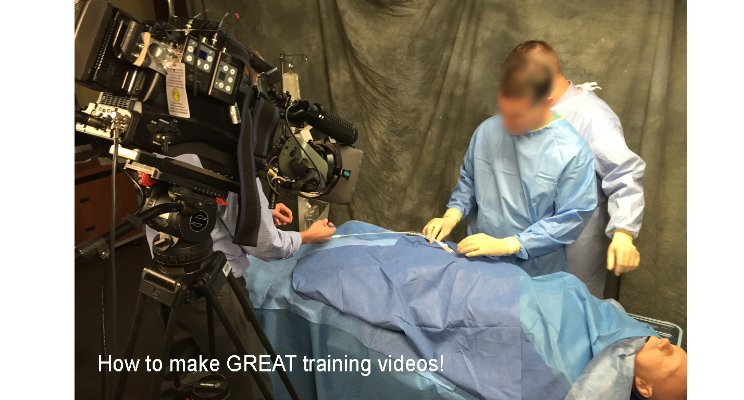Master the Art of Training Videos
Making training videos should be a piece of cake. Your company is probably loaded with experts who can use your product with their eyes closed. So why do companies struggle to share that knowledge with your customers? We’ve put together some recommendations we use when making training videos that we hope will get you on the path to becoming video training and education machines. And as always, if you don’t have the means to make your own content, we’d love to help.
1. Know your audience
The most important part of making any content is to know your audience. Companies frequently have a variety of audiences and that can sometimes mean creating slightly different versions of the same content. For example if you’re a medical device manufacturer, you most likely serve physicians, support staff and patients. You can probably speak to the doctors using clinical terminology, but the patient-facing content may require simpler, less technical language.
2. Small bites
Breaking up training into small sections makes it easier to produce and gives your audience a choice of what they want to learn. Let’s say you want to lean how to make spaghetti and meatballs. You already know how to make spaghetti, but don’t know how to make meatballs? Make it easy for your audience to select the pieces they want to learn about. At the end of each module, you can remind people that all the steps are listed at a main page and remind them that you have many more recipes available (and of course now we’re all hungry!)
3. Prepare
Stop winging it. No matter how simple you or your team may feel the content is, you always want to create an outline to make sure you cover everything that’s important. It’s easy to miss the obvious when you are so close to something and having to reshoot not only adds to your costs, but it can also slow down the delivery.
4. Test your product before the production day
Make sure all your software and devices are working and loaded with the latest updates. Having something that doesn’t work the way you need, can turn a 2-hour shoot into an all day affair.
5. Tops and tails
In our opinion, training content can also serve as marketing content. Always add a simple opening slide with your company branding along with a training title. At the end of your content, add a compelling call-to-action message that has active wording such as “watch some of our other training modules at abc123.com, or speak with one of our product professionals to schedule a demo of our newest features.”
6. Not everyone is a teacher
This is sometimes the most difficult part of making training content. The most knowledgeable person in your company could actually be a poor teacher. Attitude, heavy accents and presentation skills may disqualify your expert from this important job. You may also conclude that sometimes the expert’s time is too valuable to be redirected to a training video. What works really well is to have your gurus present the information, clean up the content with a solid script and let a professional voice over resource do the hard part.
7. Script first, image second
Your training must make sense to the ears before you can consider how it looks to the eyes. Adding the video and graphics is the easy part and it’s what we do best.
The goal for our clients is very simple, create content that works. Pretty shots and fancy camera moves mean nothing if your content fails to achieve the objective. I think most of us have struggled watching bad training videos so we really love it when we make something that’s easy to understand and keeps clients happy.
Contact us today to learn more about our video training services.
978.338.5699 or info@duchinproductions.com




